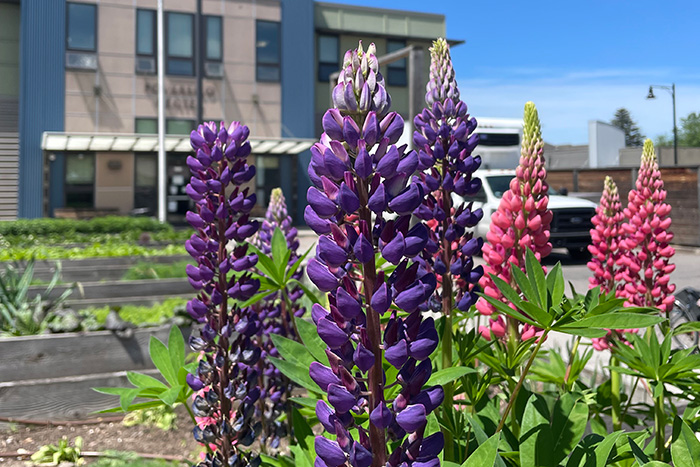“Between every two pine trees is a door leading to a new way of life.”
This line is attributed to John Muir, scribbled in the endpages of his copy of Ralph Waldo Emerson’s Prose on Nature. It wasn’t part of the original text—just a handwritten note at the edge of someone else’s words. That’s part of why I love it. It reminds me that meaning often shows up in the margins—in the spaces we’re not necessarily looking or even “supposed to be.”
These are also where much of my work happens. As a “free-range” spiritual caregiver, I’m not tied to a particular institution. I meet people in the middle of life transitions, grief, uncertainty, and quiet transformation. My role is to walk with them as they explore what matters—helping them connect their lived experience with their beliefs, values, and longings.
The name Two Pines carries with it a threshold image. You don’t usually think about walking between two trees. But when you do, you realize your whole body is moving, making a choice. Perhaps there’s some uncertainty, maybe even risk. A moment of crossing into something new, with a bit of reflection—that’s where people often find insight or healing or hope.
Imagining two pines also helps me hold onto the both/and nature of life. Things are rarely all good or all bad. Every day, people are born and people die. As fires tear through one forest, fireweed springs up in another. Life is full of simultaneous realities of paradox. We carry anger and wonder. The world is full of contradictions, and we live right in the middle of it. That complexity is not something to fix—it’s something to notice and be curious about.
Two Pines also feels congruent to my lived experience, pine trees have always been part of my landscape. I’ve walked between more pairs of pines than I can count. The simple act of moving through those trees—of paying attention to what’s around me—feels like the heart of the work I do. It’s about being present. It’s about wonder. And it’s about trust: something meaningful can emerge, in quiet ordinary (yet unexpected) places.
That’s why Two Pines. It’s a reminder that the sacred doesn’t always happen in the expected places. Moving toward healing includes embodied acts like walking. Two Pines challenges me to hold onto the paradoxes of life when I’m inclined to think “everything is terrible,” and it returns me to my own lived experience among the trees.
Thanks for being part of this journey—for trusting that meaning can be found in the in-between places, and that even the space between two pine trees might lead to something deeper, something even holy.


